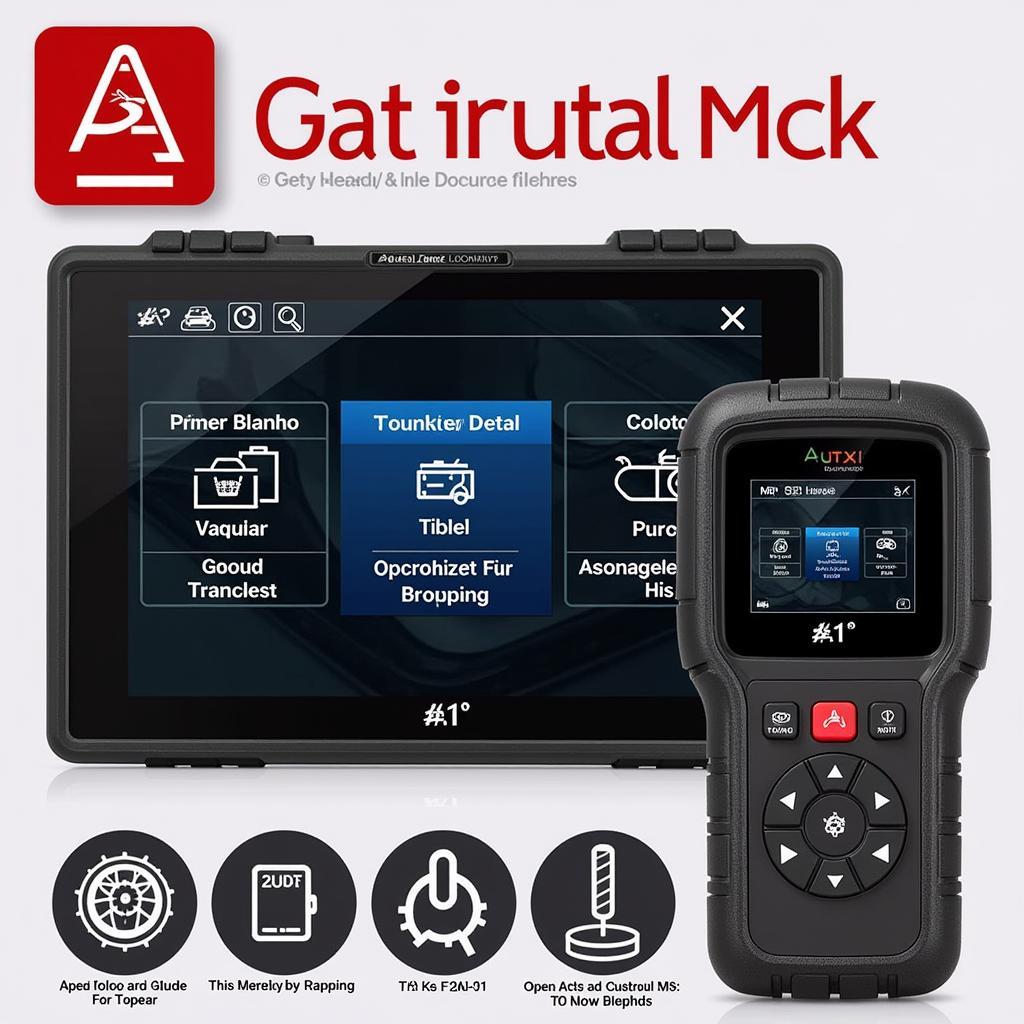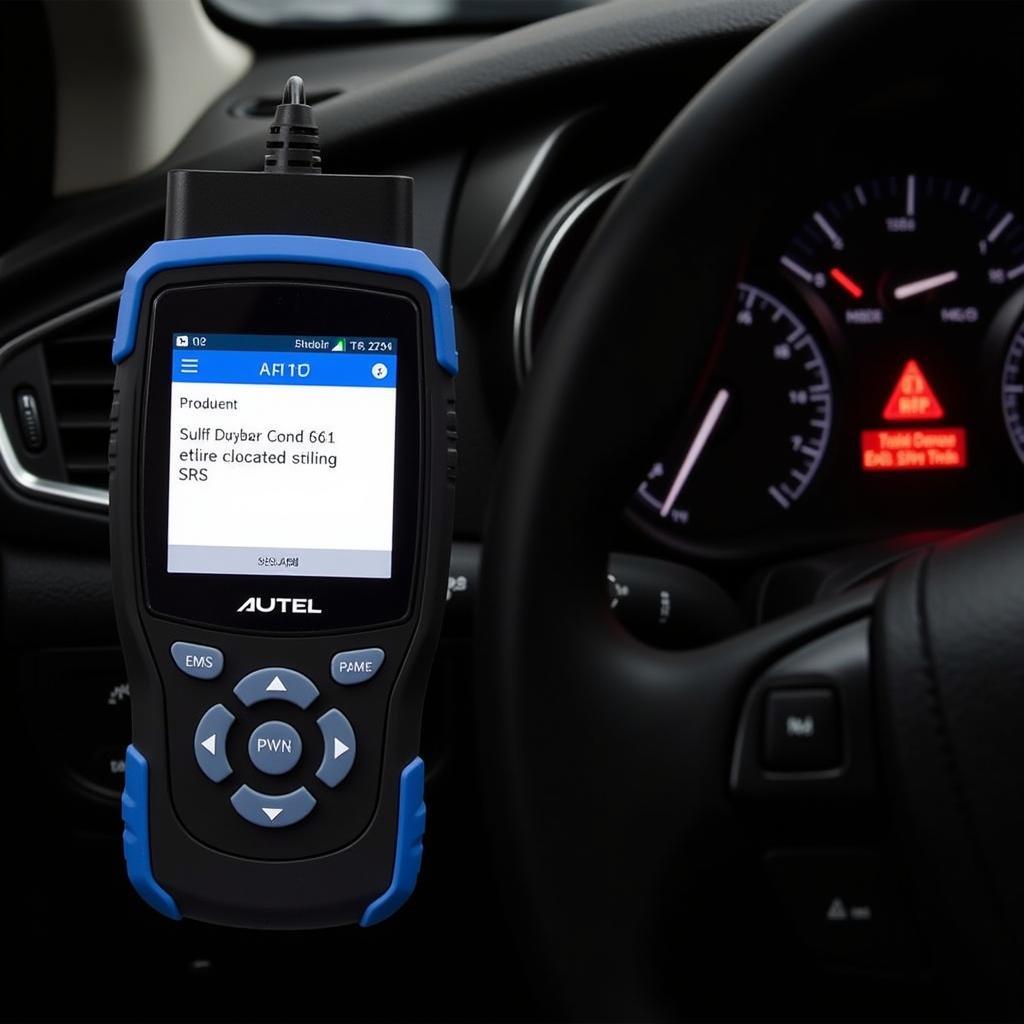“A car is a machine that runs on hope and gasoline,” a wise mechanic once told me. But what happens when that hope starts to sputter, and your car’s performance is as unpredictable as a toddler on a sugar rush? One of the most common culprits behind a car’s erratic behavior is a faulty ignition coil. But how can you know if your coil is the problem? And can a trusty tool like an Autel Maxidos help you diagnose it?
Understanding the Importance of Ignition Coils
The ignition coil is a critical component in your car’s engine. It acts like a tiny transformer, boosting the low voltage electrical signal from your car’s battery into a high voltage spark that ignites the fuel mixture in your engine’s cylinders. Think of it as the spark plug’s tiny but mighty power source, responsible for that crucial combustion process that keeps your car moving.
Will an Autel Maxidos Detect a Bad Coil?
The answer is yes, but with caveats.
The Autel Maxidos: A Powerful Diagnostic Tool
The Autel Maxidos is a popular and versatile diagnostic scanner designed for professional mechanics and DIY enthusiasts. It can read and clear fault codes, perform live data analysis, and access various vehicle control modules.
How the Maxidos Detects a Bad Coil
The Maxidos can help you identify a faulty coil by detecting certain specific fault codes related to misfires or ignition issues. These codes are generated by the engine control unit (ECU) when it senses problems with the ignition system.
For example:
- P0300: Random/Multiple Cylinder Misfire Detected
- P0301: Cylinder 1 Misfire Detected
- P0302: Cylinder 2 Misfire Detected (and so on)
These codes tell you that the ECU has identified a misfire in one or more cylinders. A faulty coil is a common reason for misfires, and the Maxidos can help you pinpoint the culprit.
However:
It’s important to understand that the Maxidos alone cannot diagnose a bad coil with 100% certainty.
- Multiple Causes of Misfires: Misfires can be caused by other factors, such as faulty spark plugs, fuel problems, or even a damaged wiring harness.
- Limited Information: The Maxidos primarily provides information about the misfire itself, not necessarily the specific component responsible for it.
You might be wondering:
“Is there a foolproof way to know if my coil is bad?”
While there isn’t a single, infallible test, a combination of methods can help you make a confident diagnosis.
Identifying a Faulty Ignition Coil: A Multi-Step Approach
-
Visual Inspection: Start by visually inspecting the ignition coil for any obvious signs of damage, such as cracks, burns, or corrosion.
 Inspection of a faulty ignition coil
Inspection of a faulty ignition coil -
Resistance Testing: Use a multimeter to test the resistance of the primary and secondary windings of the coil. Compare the readings to the manufacturer’s specifications for your vehicle. Significant deviations can indicate a faulty coil.
-
Spark Testing: Disconnect the spark plug wire from the coil and hold a spark tester near the end. Start the engine and observe the spark. A weak or intermittent spark suggests a problem with the coil.
-
Live Data Analysis: Use the Autel Maxidos to monitor live data parameters, such as ignition timing, fuel trim, and cylinder misfire counts. These readings can reveal patterns that point to a faulty coil.
The “Feng Shui” of Your Car: Finding Harmony in the Electrical System
“Everything is connected, and everything has a purpose,” as a wise sage once said. This is especially true in your car’s electrical system. A faulty coil can disrupt the delicate balance of your car’s engine, leading to a cascade of issues, like a domino effect.
By diagnosing and addressing a faulty coil, you restore harmony to your car’s electrical system, leading to smoother performance and reduced stress on other components.
What to do Next
If you suspect a faulty coil, consider these next steps:
- Consult a Mechanic: It’s always a good idea to consult with a qualified mechanic, especially if you’re not comfortable performing the diagnostic tests yourself.
- Replace the Coil: If a faulty coil is confirmed, replace it with a genuine OEM part or a high-quality aftermarket equivalent.
- Perform Preventive Maintenance: Regular maintenance, including spark plug replacement and inspection of ignition system components, can help prevent future coil failures.
Conclusion
While the Autel Maxidos can be a valuable tool in diagnosing a faulty ignition coil, it’s important to use it in conjunction with other diagnostic methods and seek professional advice when necessary. Remember, your car is a complex machine with interconnected systems, and a simple “misfire” can be a sign of a deeper issue.
Do you have any questions about ignition coils or diagnosing engine problems? Leave a comment below! We’re here to help.
Looking for professional assistance with diagnostics tools or repair advice? Contact us on Whatsapp: +84767531508. Our team of certified automotive professionals is available 24/7 to provide expert guidance and support.
For more helpful articles on automotive diagnostics and repairs, visit:
[Link to relevant article on diagxcar.com]
[Link to another relevant article on diagxcar.com]
Explore our comprehensive resource library for additional information on European car diagnostics:
[Link to European car diagnostics category page on diagxcar.com]
[Link to European car diagnostics tool page on diagxcar.com]
We encourage you to continue exploring our website for in-depth knowledge and insightful content on all things automotive.


